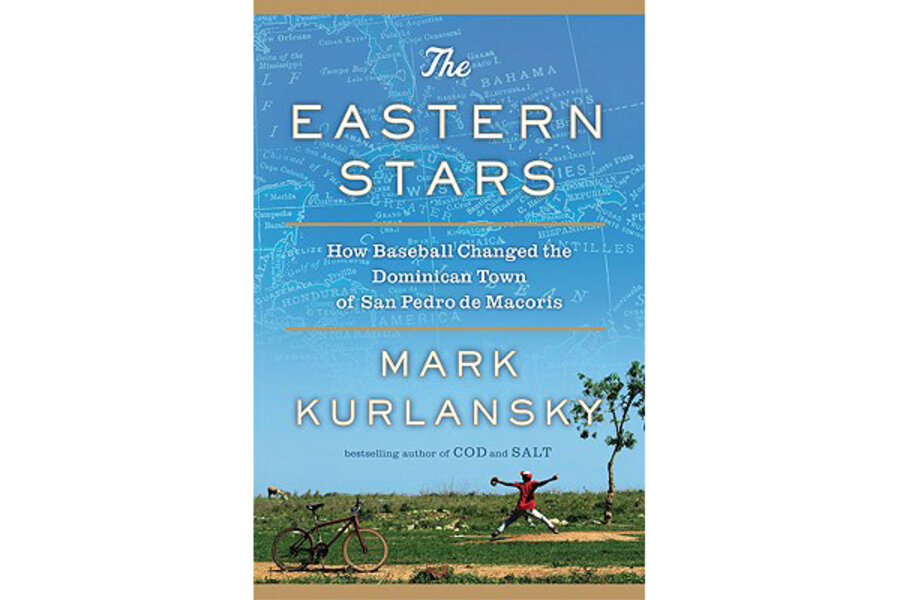The Eastern Stars
Loading...
I craved a home run from Mark Kurlansky’s The Eastern Stars, but all I got was a single. “The Eastern Stars” has fascinating moments, but its course is unsteady, its rhythm erratic.
The book aims to explain why San Pedro de Macoris, a small, poor town in the Dominican Republic, produces so many Major League Baseball players. Unfortunately, it will be more interesting to statisticians than to readers seeking the thrill of the game.
Even though Kurlansky profiles numerous Dominicans who became major- leaguers in the US and Japan, he fails to communicate the excitement of baseball. I hankered for a chapter in which he described a game among talented kids in one of the ballparks in which they train.
Still, the book is intelligently analytical. It expertly parses a mulatto country in which skin shade can influence the trajectory of a career. It documents the feckless, US-influenced politics of a country in which the gap between rich and poor never seems to narrow. And it transmits useful minutiae including numerous recipes for examples of Dominican cuisine.
Kurlansky can also put you on the scene: “San Pedro’s commerce spilled onto the street from the kind of one-story Latin-American concrete architecture that tried to avoid drabness by being painted in the industrial color palette used in the making of popsicles,” he writes in a chapter on the town’s transition from a sugar-producing center to a baseball mill. “In the end, most of the newer buildings resembled dirty bubble gum. The metal grating on every door and window made the houses look like smiling teenagers with their braces showing.”
By interweaving profiles of major- leaguers such as George Bell, the storied and controversial Sammy Sosa, and Rico Carty with a history of San Pedro’s sugar industry, Kurlansky develops a portrait of a community bracketed by wealthy professional baseball players and poor sugar- cane workers who barely survive, year after year.
He connects the increasing clout of Dominican baseball to the evolution of US baseball from the days of the Negro League to now, when the sport is color-neutral. Only 15 percent of the population of the Dominican Republic is white, and “Dominicans are not strangers to racism,” he writes. “The Dominican – in fact pan-Caribbean-obsession with the calibrating of racial differences is profoundly racist.” Among Kurlansky’s more interesting detours is a discussion of cocolos, darker-skinned immigrants to the Dominican Republic from more Francophile and Anglophile Caribbean islands. Resented by natives for horning in on their livelihood, they also “blackened” the country, leading dictator Rafael Trujillo to welcome Jews fleeing World War II Europe to counter that shading.
Color wasn’t the only barrier to Dominicans entering the major leagues. Other stereotypes figured, too, like that of the “hot blooded Latin.” Although the prototype was Adolfo Luque, a Cuban pitcher known for accidentally hitting Casey Stengel in the jaw, Juan Marichal put the Dominican stamp on the term in a 1965 brawl in which the San Francisco Giants’ pitcher hit Brooklyn Dodgers’ catcher Johnny Roseboro with a bat. Marichal’s provenance – he was a favorite of Ramfis Trujillo, son of the dictator – didn’t enhance his reputation. Still, Marichal remains the only Dominican elected to the Baseball Hall of Fame – largely thanks to Roseboro, who had become his good friend.
“Eastern Stars” (the name of the ill-fated San Pedro team) breaks down the components of a Dominican’s baseball career, showing it’s a ticket to wealth, if not happiness. “The public likes to make heroes out of athletes, and in San Pedro, heroes who will make their poor town prosper at last,” Kurlansky writes. “But heroics is a lot to expect from someone snatched away without education at age sixteen and handed fame and wealth at a dizzying speed while living in a world of unworldly men devoted to playing a boy’s game.” Insightful words. But tracking a teenaged player on the ascent might have been more illuminating than recapitulating the careers of ones past their prime.
Carlo Wolff is a freelance writer from Cleveland.






